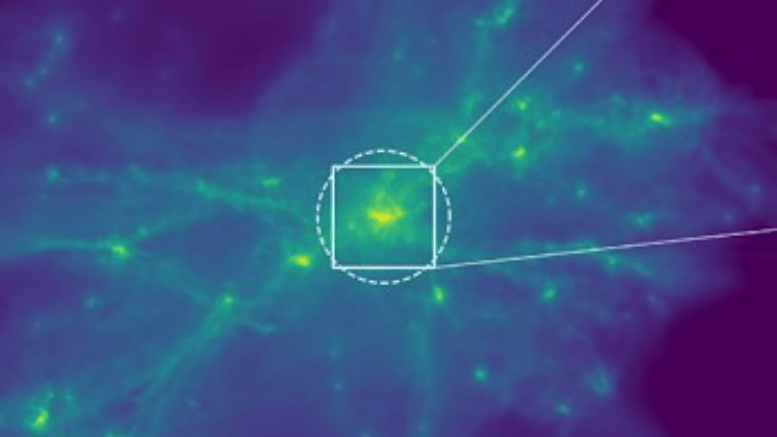Professor Claude-André Faucher-Giguère simulates how galaxies feed their supermassive black holes
August 24, 2021

Professor Claude-André Faucher-Giguère, of the Department of Physics and Astronomy, helped develop a new high-powered simulation that shows how gas flows across the universe.
The simulation is the first to explain how galaxies’ spiral arms scoop up gas that feeds their supermassive black holes. It also sheds some light on the mysterious nature of quasars, which are fast-growing black holes that are some of the most luminous objects in the universe. Though black hole growth has been modeled before, this is the first single computer simulation powerful enough to account for the many forces that play into the evolution of supermassive black holes.
“The light we observe from distant quasars is powered as gas falls into supermassive black holes and gets heated up in the process,” said Faucher-Giguère. “Our simulations show that galaxy structures, such as spiral arms, use gravitational forces to ‘put the brakes on’ gas that would otherwise orbit galaxy centers forever. This breaking mechanism enables the gas to instead fall into black holes and the gravitational brakes, or torques, are strong enough to explain the quasars that we observe.”
Supermassive black holes can swallow 10 times the mass of our sun in just one year, but while some supermassive black holes enjoy a continuous supply of food, others go dormant for millions of years, only to reawaken abruptly because of a sudden influx of gas.
To try and understand why this happens, Faucher-Giguère and a team of researchers decided to develop a simulation of these events. The simulation incorporates many of the key physical processes — including the expansion of the universe and the galactic environment on large scales, gravity gas hydrodynamics and feedback from massive stars — into one single model. Additionally, because of new technology, the simulation has 1,000 times better resolution than previous simulations.
The new simulation will help researchers understand the origin of the supermassive black hole at the center of our own Milky Way galaxy, and how black holes can form and grow under various conditions.
Read more about the simulation in Northwestern Now.
Space

First Radio Pulses Traced to Dead-Star Binary
March 12, 2025
An international team of astronomers, including a Northwestern University astrophysicist, has traced a series of mysterious radio pulses to an unprecedented home. Starting a decade ago, astronomers have detected a pulse of radio emission every…

Flickers and Flares: Milky Way’s Central Black Hole Constantly Bubbles With Light
February 18, 2025
The supermassive black hole at the center of the Milky Way appears to be having a party — and it is weird, wild and wonderful. Using NASA’s James Webb Space Telescope (JWST), a Northwestern University-led…

Black Holes’ Spins Align in a Valentine’s Embrace
February 14, 2025
Most people have heard of “love at first sight.” But how about “love at first collision?” In a study fit for Valentine’s Day, Northwestern University astrophysicists discovered that binary black holes — when formed in…

Astrophysicist Adam Miller Receives Cottrell Scholar Award
February 13, 2025
Northwestern University astrophysicist Adam Miller has received a 2025 Cottrell Scholar Award from the Research Corporation for Science Advancement (RCSA), the United States’ first foundation wholly dedicated to science. Miller is among a diverse group of 16…



